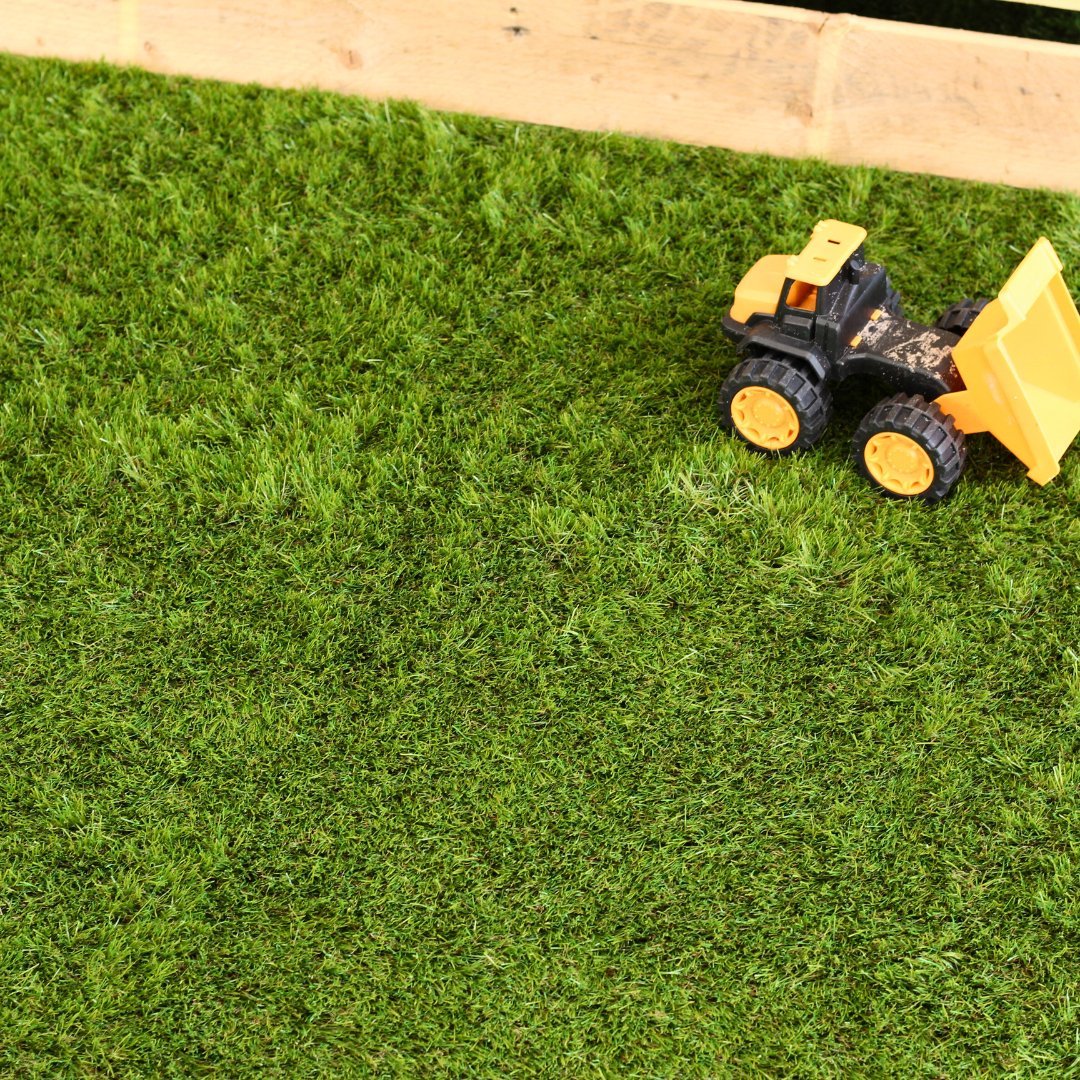Like any surface, artificial turf absorbs heat, which means it can get warm on sunny days (even in the UK). Yet high-quality artificial grass incorporates new technologies to keep your lawn slightly cooler in the summer.
In this article, we’ll explore artificial grass heat resistance, does artificial turf get hot, and how artificial grass performs in hot weather compared to real grass.
Does Artificial Turf Get Hot?
In hot weather, artificial turf can get warm, but not too hot to walk on, making it safe for children and pets to use year-round. Fake grass can get warm in the sun because it absorbs heat (just like real grass does), which gradually warms up the surface.
During average UK temperatures, artificial turf shouldn’t get hot, especially if the lawn is in the shade. The surface only gets warm on very hot days when the grass is in direct sunlight for long periods.
Is There an Artificial Turf That Doesn't Get Hot?
No, all artificial turf is made from synthetic materials, such as polyethylene or nylon, which absorb heat. These materials can warm up fake grass gradually, but they also make artificial grass a durable and low-maintenance option for gardens.
What Performs Better in Hot Weather? Artificial Grass Heat Resistance vs Real Grass
While real grass stays slightly cooler in the summer, artificial turf performs better overall in the sun and offers more benefits to homeowners.
Pros of artificial grass in hot weather:
- Retains its green appearance year-round
- Doesn’t need watering (although misting fake grass on hot days can keep it cool)
- Won’t get muddy after cleaning or misting, enabling kids and pets to instantly enjoy the lawn
- Lasts during all weathers, including direct sunlight, with built-in UV protection properties
- Won’t get as hot as other surfaces, like patios or concrete
- High-quality fake grass, like our luxury artificial turf, has a high heat resistance, helping it stay cool in the sun
Cons of artificial grass in summer:
- Can feel warmer underfoot compared to real grass
- Prolonged sunlight exposure can eventually cause fading (our range is UV stabilised, which guarantees five years of bright colouring)
Cons of real grass in hot weather:
- Hot weather dries out real grass and can destroy it completely
- Requires frequent watering during warm weather to protect it from dying
- Can turn brown or become patchy and straw-like during hot weather
Pros of real grass in hot weather:
- Stays slightly cooler compared to artificial grass (due to moisture in the ground and leaf blades)

How Do I Stop My Artificial Grass From Getting Hot?
Read our tips on cooling artificial grass:
- Use a good foundation: We recommend 50mm of MOT stone sub-base followed by 25mm of granite or limestone dust (see our installation guide)
- Opt for a lighter green: Our light green Sunningdale range can reflect the sun more compared to our dark green Bakewell range, thus staying slightly cooler
- Mist the grass: On a particularly hot summer day, lightly watering the grass can help it stay cooler for longer by dropping the surface temperature





